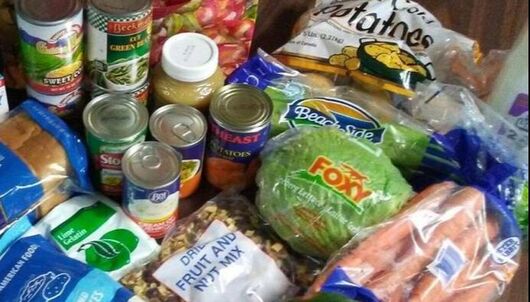Rising Need, Rising Costs, and Food Shortages.Food pantries are in need of food donations more than ever this holiday, across the country, from the East, through the Midwest, to the West. It is a matter of supply (shortages) and (increased) demand. In 2020, rough estimates indicate 45 million people, or 1 in 7, experienced food insecurity as the pandemic forced tens of millions to suffer from unemployment or saw their work hours decline, according to an analysis by Feeding America. Increases in food prices are creating more food insecurity. Over the past year, food prices have risen 5.3 percent, according to the U.S. Bureau of Labor Statistics. That is driving more people to seek out help. Rising food costs are also impacting food shelves. Because of these increases, the food banks are having to spend thousands of additional dollars on food per month for the same items. Additionally, the supply chain shortages that slow the supply of key items, like fresh vegetables and fruit that come from outside the US, have resulted in less inventory and increased transportation costs, further limiting what food shelves can do with their dollars. What Food Donations are Most Needed?Each food pantry or nonprofit is different. Keep in mind they may serve diverse groups of people, from children to seniors, rural to urban, and people with every kind of cultural background and dietary need. It is important to find out what is needed where you are donating. Food that is shelf-stable is very flexible and allows for storing and easy packing. Nutritious food is also especially important for people who are experiencing food insecurity. This is especially true in food deserts in cities as well as rural areas where healthy choices aren't accessible. Food in different sizes is a consideration, as well. For example, meal packs or staples like flour and milk may be great for families making food for the entire family. For organizations like Hope4Youth, who serve young people on the move, donations of travel-size and single-serving foods are most helpful, including no-cook items for those who may not be able to easily heat food. Consider ease of opening and preparation such as pop-top cans and items that don't require other ingredients that someone might not have. In short, it is important to know who the food is going to and what they most need, but there are a few fairly universal items that are almost always appreciated. Here are the top 6 most requested food donations:
Two donations to avoid:
How To HelpFood shelves run on two things, financial and food donations. An easy answer to how you can help might be right inside your cupboard. Are there cans, boxes, or bags of shelf-stable food items that you know you aren't going to use? Pack them up and donate them near you. Check DonateGoodStuff.org to find what is closest. You will find not only traditional food pantries, but all kinds of organizations offering food support. Other resources for locating food pantries across the US are FoodPantries.org and Feeding America, a nationwide nonprofit food-provider network aiming to ensure equitable access in the United States. And if you can spare it, financial donations are always greatly appreciated. Donate (only) Good Stuff Make sure you donate what is needed so you can have the most positive impact possible. Do:
Don't:
Make it a Group Effort What if you only have a few items to donate? Collect from neighbors, friends, and family. Ask people to go through their cupboards and add to the collection. It takes just a little effort to post on social media, or to send an email or message to a few people around you. Making just one trip instead of many people making trips not only saves everyone time but leaves a smaller carbon footprint. With a little bit of extra help from the community, everyone will have the food they need through the holidays.
1 Comment
|
Recent PostsCategories
All
Archives
June 2024
|
Copyright © 2024 - Hero Management, Inc




 RSS Feed
RSS Feed